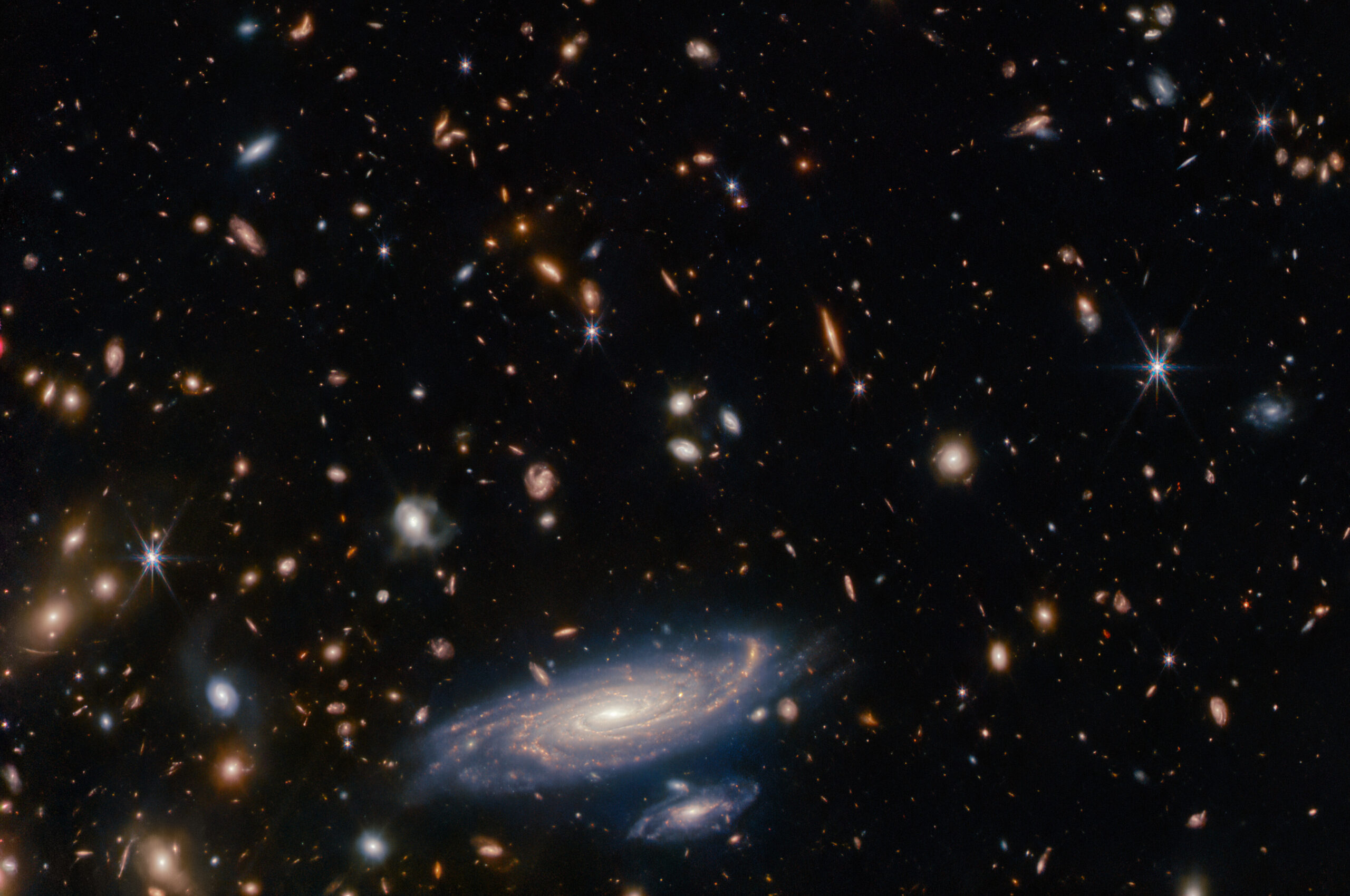Over 20 years ago, the instrument teams for the James Webb Space Telescope (JWST) outlined comprehensive science programs to answer to key questions concerning the origins of stars and planets, with implications as well for the origin of life.
An international team of astronomers has used the NASA/ESA/CSA James Webb Space Telescope to detect the first rich population of brown dwarf candidates outside the Milky Way in the star cluster NGC 602.
ISSI is currently witnessing a vibrant exchange of ideas as experts from across the globe are convening for the inaugural day of the “Chronology of the Very Early Universe According to JWST: The First Billion Years” workshop.
Online Seminar with Roberto Maiolino (Cambridge University, UK)
The James Webb Space Telescope is revolutionising most areas of astrophysics. One of the most exciting and puzzling findings has been the discovery of a large population of massive black holes within the first billion years after the Big Bang.
We are now more than a full year into the era of JWST, NASA’s flagship observatory and successor to the Hubble Space Telescope. Exoplanet characterization has historically been dominated by space-based facilities, and the new infrared capabilities of JWST are uncovering the atmospheres of exoplanets in an unprecedented way. The chemical signatures of planets are being actively probed and detected, with an array of new chemical species now detectable including oxygen, carbon and nitrogen-bering molecules. This opens up spectral constrains to the rich atmospheric chemistry ongoing in a wide range of planetary types, temperatures, and metallicities. In this talk, the speaker will discuss some of the outstanding questions in the exoplanet field and how the atmospheric chemistry can help address these questions. He will also present new transit and phase curve results from ongoing JWST programs, including a Neptune and Jupiter mass planet discussing the implications of the chemistry and atmospheric physics of these planets.
Computer simulations of the universe have been in common use since the 1980s, and are now a vital tool in helping us interpret data from increasingly powerful telescopes. Amongst other things, simulations have helped establish the case for dark matter and dark energy, and have been key to creating a broad consensus around the idea that galaxies start small and grow over time through merging. The speaker reviews in outline how these simulations work, and highlight that a key difficulty in understanding their results is to untangle cause and effect. For example, the observed diversity of different galaxy sizes, shapes and colours can be reproduced in a statistical sense, but there is still considerable uncertainty around which causal processes give rise to this diversity. The speaker explains how exerting careful experimentation with the initial conditions for our simulations, which represent conditions shortly after the ‘big bang’, we can start to address these uncertainties. We call this technique ‘genetic modification’, since it loosely corresponds to controlling the genes of our virtual galaxies, to see how the galaxies mature and develop in response. This in turn helps to build a more complete physical picture of how galaxies mature over time, with carefully quantified uncertainties. The speaker discusses how such efforts are vital to making sense of new observations from cutting-edge and future facilities like Gaia, JWST, ELT, SKA and LISA.
Last July scientists and journalists gathered at ISSI to celebrate the unveiling of the first JWST images and spectra. On this occasion Willy Benz, the new chair of ISSI’s BoT, anticipated that JWST would be an observatory that everyone will want to use. The ISSI community is certainly no exception in this respect, with at least two ISSI International Teams securing JWST observing time this spring.
The Hubble Space Telescope has been called the most productive scientific instrument in human history. Launched in 1990, the telescope has performed observations which have measured the age of the Universe, confirmed the existence of black holes, discovered the accelerating Universe, and amazed the general public. On Christmas day in 2021 the James Webb Space Telescope (JWST) was launched into space after decades of development. JWST was designed to extend the view of Hubble in regions of the cosmos Hubble can’t penetrate. JWST is exceeding the grand expectations of its ability to unravel the mysteries of the Universe. Join Astronaut/Astrophysicist John Grunsfeld as he takes us through the stories of Hubble and Webb.
